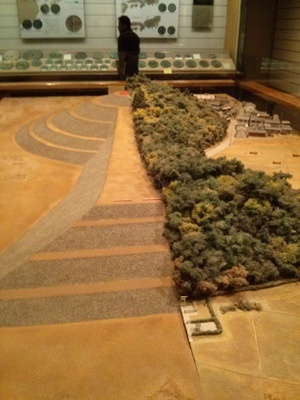Kofun Period

- Japanese: 古墳時代 (kofun jidai)
The Kofun period extends from roughly 250 CE to roughly 550 CE, and is marked by the prevalence of large tomb-mounds or tumuli, called kofun in Japanese, in which royalty and other elites were buried. The Kofun period and the Asuka period (538-710) which follow it together comprise the Yamato period, the period of time in which the people of Japan were divided into a multitude of regional polities, organized loosely under "Great Kings" based in the Yamato plain. Over the course of the period, this Yamato state first emerged, developed into a hegemonic centralized polity, gained in strength, and eventually grew into the proto-Japanese state.
The largest kofun are found in the Kinai region (in and around Nara, Kyoto, and Osaka), but roughly 150,000 tomb-mounds of various sizes are strewn throughout most of the main three islands of the archipelago (excluding Hokkaidô and the Ryûkyû Islands)
Bronze mirrors, symbols of wealth, power, and prestige held by local and regional elites, though largely imported in the Yayoi period, now began to be more widely produced within Japan.[1]
Though the end of the political and cultural circumstances of the Kofun Period, and the termination of the construction of kofun, cannot be pegged to a specific date or event, historians often cite the introduction of Buddhism in or around 538 as marking the end of the Kofun Period and the beginning of the Asuka Period, a period when the adoption of numerous Tang Dynasty political, legal, and cultural elements set the foundation for the heavily Chinese-influenced classical/traditional "Japanese" culture and state that would continue to develop over many centuries, down to today.
| Previous Period Yayoi Period |
Kofun Period | Following Period Asuka Period |
References
- Conrad Schirokauer, David Lurie, and Suzanne Gay, A Brief History of Japanese Civilization, Wadsworth Cengage (2013), 11-15.
- ↑ Gallery labels, "Mirrors," Japan Gallery, British Museum.